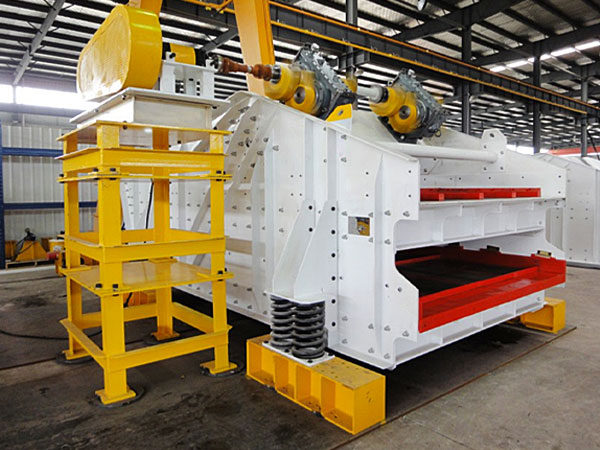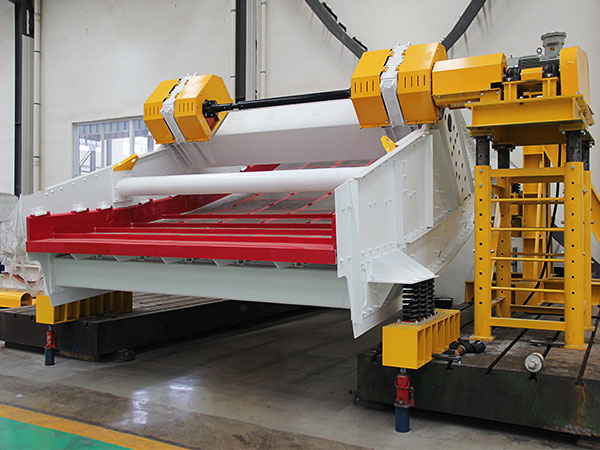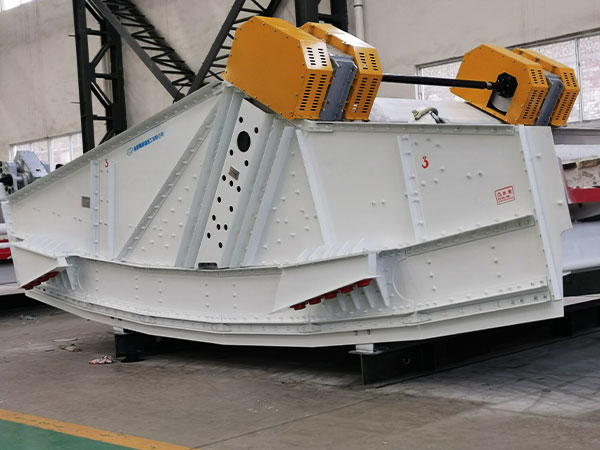What are the specifications and dimensions of vibrating screen mesh?
The vibrating screen mesh is a metal mesh structural element. Its weaving structure is usually pre-bent into a corrugated form by bending the metal wire, so that the two bends are stuck in the same position to ensure the size of the mesh. This structure makes the vibrating screen mesh have multiple forms such as bidirectional corrugated bends, locked bends, bidirectional wave separation bends, flat top bends, and unidirectional corrugated bends, and the structure is strong.
The specifications and sizes of vibrating screen mesh vary, mainly depending on the particle size characteristics and process requirements of the screened material. The following are some common vibrating screen mesh specifications and related information:

1. Comparison of sieve hole size and mesh number
The specifications of vibrating screen mesh are usually described by the mesh size and mesh number. The mesh number refers to the number of mesh holes per inch (25.4mm) in length, while the mesh size directly reflects the actual size of the mesh. The following are some common correspondences between mesh sizes and mesh numbers:
| Screen size(mm) | Standard mesh |
|---|---|
| 4.75 | 4 mesh |
| 4.00 | 5mesh |
| 3.35 | 6mesh |
| 2.80 | 7mesh |
| 2.36 | 8mesh |
| 2.00 | 10mesh |
| 1.70 | 12mesh |
| 1.40 | 14mesh |
| 1.18 | 16mesh |
| 1.00 | 18mesh |
| 0.850 | 20mesh |
| 0.710 | 25mesh |
| 0.600 | 30mesh |
| 0.500 | 35mesh |
| 0.425 | 40mesh |
| 0.355 | 45mesh |
| 0.300 | 50mesh |
| 0.250 | 60mesh |
| 0.212 | 70mesh |
| 0.180 | 80mesh |
| 0.150 | 100mesh |
| 0.125 | 120mesh |
| 0.106 | 140mesh |
| 0.090 | 170mesh |
| 0.0750 | 200mesh |
| 0.0630 | 230mesh |
| 0.0530 | 270mesh |
| 0.0450 | 325mesh |
| 0.0380 | 400mesh |
Please note that the sieve hole sizes and mesh sizes in the above table are only common specifications and are for reference only. There may be other specific specifications of sieves in actual production.

2. Screen shape and size
The vibrating screen mesh is generally square or rectangular, and its size specifications include two dimensions: length and width. Common mesh sizes include 2mm, 3mm, 5mm, 10mm, 15mm, 20mm, etc., but these dimensions usually refer to the diameter or side length of the mesh, not the overall size of the mesh. The overall size of the mesh (i.e., length and width) is determined according to the specific equipment model and production requirements.
3. Screen material and type
The material and type of the vibrating screen mesh are also important factors affecting its specifications and dimensions. Common screen materials include metal screens (such as stainless steel screens, phosphor bronze screens, etc.) and non-metallic screens (such as polymer screens, ceramic screens, etc.). In addition, there are composite screens made of two or more materials. Different types of screens have different wear resistance, tensile strength and corrosion resistance, and are suitable for different working conditions and materials.
In summary, the specifications and dimensions of the vibrating screen mesh are varied, and the specific selection should be determined according to the particle size characteristics and process requirements of the screened material. At the same time, the material and type of the screen are also important factors to consider when choosing.






